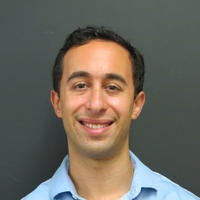Dr. Jay Stotsky, University of Minnesota, Twin Cities
Abstract: Certain proteins, known as morphogens, play an important role in biological pattern formation and development. In the classic “French flag” model of morphogen induced patterning, a morphogen is secreted by a localized set of cells leading to a concentration gradient through a tissue. Target cells detect this protein and activate certain genes in a concentration dependent manner leading to variable gene expression and tissue patterning.
Since morphogens are transported over a distance to reach their target cells, biophysical properties such as the diffusivity of the morphogen must be quantified in order to fully understand the mechanisms by which transport occurs. However, measurement of the diffusivity of a particular morphogen, Decapentaplegic (DPP), which is involved in patterning of the fly (Drosophila melanogaster) wing disc, a larval tissue which eventually becomes the wing, has led to controversy. Different groups have obtained measurements of the diffusivity that differ by orders of magnitude. Furthermore, since diffusivity is not directly observable, but typically estimated by fitting fluorescence data to a model chosen by the experimenters, issues with interpretation of data have also confounded clarity. Sorting this out is important since many of the genes and biological processes that occur in the wing disc are conserved across many species, including in humans.
In this talk, I will first discuss the biological background and greater detail. I will then discuss an approach, based on continuous time random walk models, towards understanding how tissue-scale properties of morphogens such as DPP depend on cellular level features.
Bio: Dr. Jay Stotsky is an applied mathematician working in the field of mathematical biology. His areas of interest include how mechanical forces and biochemical networks interact to regulate growth in organisms, the influence of cell-level behavior on tissue properties, how colonies of bacteria, known as biofilms, deform in response to mechanical stress, and numerical methods for fluid-structure interaction problems. As a graduate student, Dr. Stotsky received a Computational Science Graduate Fellowship and graduated from the University of Colorado at Boulder in 2018. Upon graduation, he moved to Minnesota to work as a postdoc with Hans Othmer at the University of Minnesota. Outside of work, Dr. Stotsky enjoys music and is an avid pianist, and also enjoys tennis and swimming.The talk being given reflects some exciting recent work with Prof. Hans Othmer and Prof. Jia Gou on the transport of proteins through cellular tissue.
